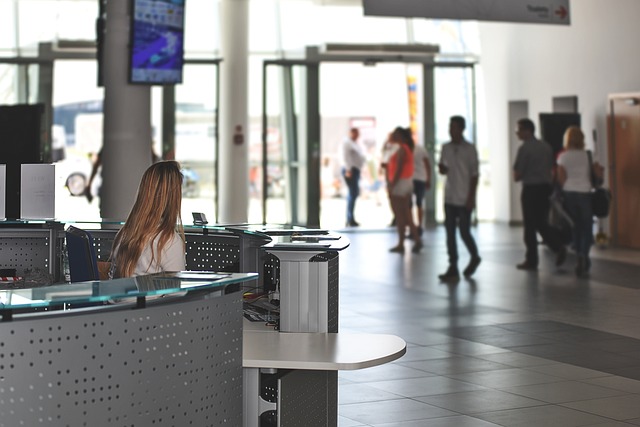IoT in Customer Services: Role, Advantages, and Limitations

The Internet of Things (IoT) use in customer service settings is rapidly increasing and can provide many advantages to organizations.
IoT offers a wide range of capabilities that can help companies improve customer service through faster, more efficient communication, data insight, and automation.
What is IoT?
IoT stands for Internet of Things and is a concept that describes the networking of physical objects, such as machines, appliances, vehicles, and other items, through radio frequency identification (RFID) or wireless sensor networks.
These objects can be remotely monitored and controlled over the internet and communicate with other devices connected to the network. IoT technology enables data collection from various sources and the ability to control devices remotely.
Advantages of the Internet of Things (IoT) in customer service
The Internet of Things (IoT) is a network of physical devices, vehicles, home appliances, and other items embedded with electronics, software, sensors, actuators, and connectivity, enabling these objects to connect and exchange data. The potential benefits of the IoT in customer service are numerous:
- Improved customer experience – IoT technology can enable businesses to provide customers with a more customized, personalized experience. For instance, retailers can use IoT-enabled devices and sensors to collect data on customers’ preferences and behaviors to tailor their offerings accordingly. This ensures that customers receive the products or services they need efficiently.
- Smarter customer service – IoT technologies can facilitate more innovative customer service by offering real-time insights into the problem. For example, IoT-enabled devices and sensors can detect when a customer is having an issue with a product or service, allowing customer service agents to quickly provide solutions that address the specific needs of each individual.
- Automated customer support – IoT technology enables businesses to automate customer support processes. For instance, companies can deploy IoT-powered devices and sensors to identify potential problems before they occur, thereby avoiding costly downtime or service disruption.
- Cost savings – By utilizing IoT customer service, businesses can reduce the costs associated with customer service. Companies can improve efficiency and reduce labor costs by automating specific processes and collecting real-time data.
Overall, customer service is improved by streamlining operations and eliminating redundant tasks. Additionally, businesses can create stronger customer relationships by offering customized, personalized experiences and real-time insights into customer needs.
Limitations of IoT implementation in customer service:
IoT implementation in customer service has limitations. Despite providing an efficient and cost-effective way to streamline operations, IoT devices can only be as effective as the data fed into them.
If the information isn’t accurate or up-to-date, it can lead to incorrect decisions and poor customer service. The main IoT customer service limitations are
- Complex process- IoT implementation requires complex processes and procedures to ensure functionality. It can be difficult and time-consuming to set up, configure, integrate and maintain the devices.
- Risk to data- With the collection and storage of large amounts of customer data, there is a potential risk to sensitive information. Any breach or mishandling of this data could have severe legal and financial implications.
- Limited scalability- Small businesses may find IoT customer service solutions too large and complex for their needs, making it difficult to scale up or down as needed.
- Expensive- IoT customer service solutions can be expensive due to hardware, software, and maintenance expenses. The constant need for updates or upgrades can add additional costs as well.
How to overcome the limitations for successful implementation
Organizations must take measures to overcome the hurdles to ensure a successful implementation of IoT in customer service. Here are some tips to help ensure a successful integration:
Develop a comprehensive strategy: Organizations should create a comprehensive approach that outlines goals, objectives, and solutions for how the technology will be used. This will help identify potential issues before they arise and help set realistic expectations.
Set up secure protocols: Organizations must create security protocols to protect customer data from potential threats. This includes encrypting all collected data and setting up two-factor authentication for access to the system.
Invest in quality hardware: Companies should invest in quality hardware that is reliable, efficient, and durable. This can help minimize downtime and technical issues that may arise.
Train personnel: Companies should ensure employees are adequately trained to handle the system, from its installation to daily use. This helps prevent errors and misuse of the system.
Use cases of IoT in customer service
IoT has numerous use cases in customer service, from tracking customer orders to providing personalized experiences. Here are some prominent use cases:
Order tracking: IoT sensors can track customer orders from when they’re placed until delivery. This helps organizations keep customers informed about their order status and provide support if necessary.
Location-based services: Devices can track customer locations, which helps companies provide location-based services and discounts.
Customer analytics: IoT devices can collect data on customers’ behavior, demographics, and preferences. This helps organizations gain insight into their customers and tailor marketing campaigns accordingly.
Personalized experiences: IoT devices can create customized customer experiences by tracking their behavior and preferences. This helps organizations build customer loyalty and increase customer satisfaction.
Self-service options: Customers can use IoT devices to access self-service options, such as payment processing or FAQs. This enables companies to provide fast, efficient customer service.
IoT has the potential to revolutionize the customer service industry and create more efficient, personalized experiences for customers.
Conclusion
While some potential challenges are associated with using IoT in customer service; the advantages far outweigh them.
Organizations can create more efficient customer service experiences by ensuring security and reliability to help build customer relationships and increase loyalty.
IoT has the potential to revolutionize the customer service industry and provide companies with the insights needed to provide personalized experiences, increase customer satisfaction, and build loyalty.
With this in mind, it is clear that IoT offers organizations the opportunity to take their customer service to the next level.





